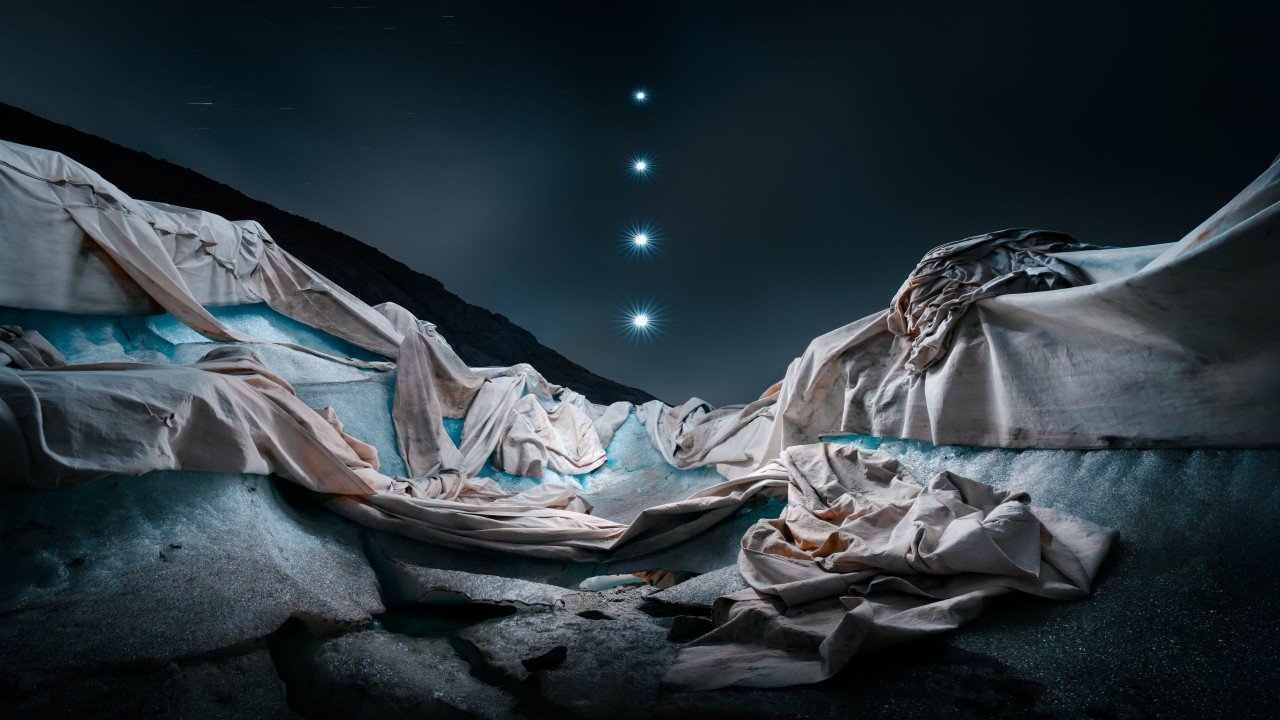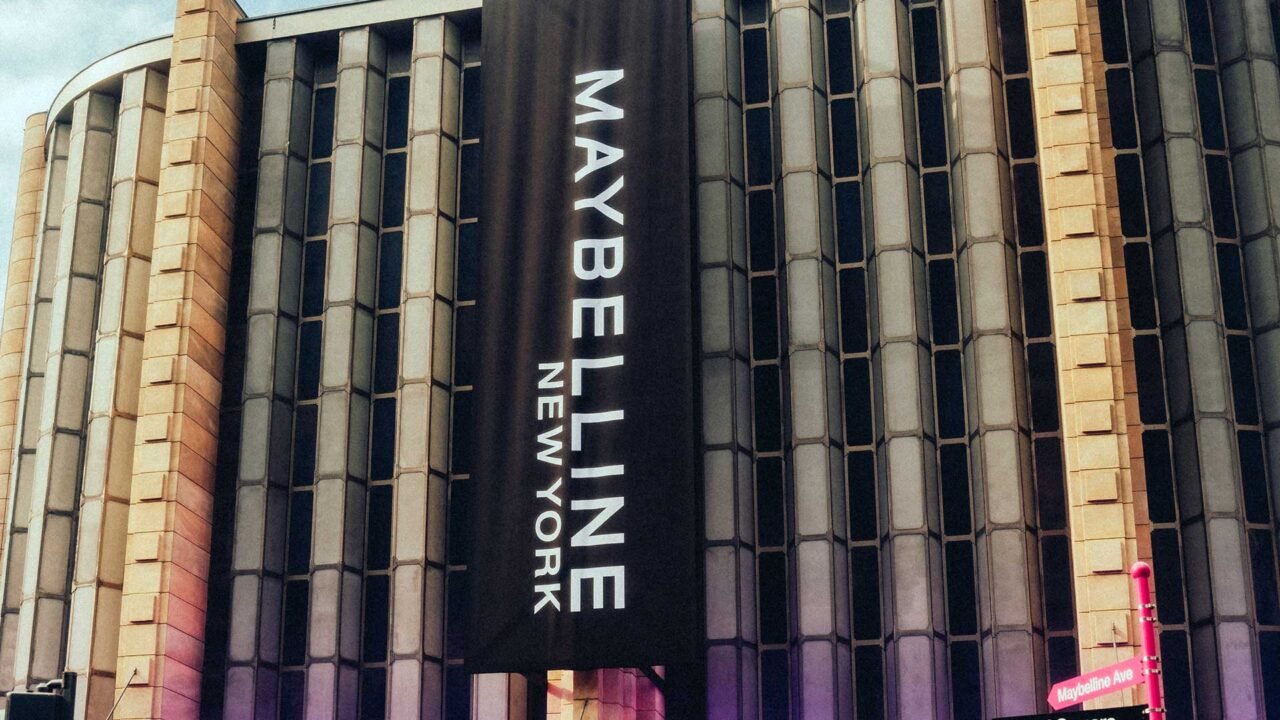
Luis Alberto Naranjo and the Cinematic Journey of Buena Suerte
August 29, 2025
Interview | Why Clothing Speaks Louder Than Words with Xinyi Chen
September 1, 2025The Ice That Bled
Once a towering giant of the Alps, the Rhone Glacier is now reduced to fragments of ice draped in torn thermal blankets - the last remnants of a desperate and ultimately futile defence. Liam Man’s Carcass of the Ice Beast captures a haunting landscape where human effort meets irreversible loss. In 2009, reflective blankets were installed over the glacier to slow its retreat.
Today, what remains of these coverings hangs like shredded skin on the bones of a dying creature, stretched over ice blocks that no longer anchor the mountain with their former mass.
Just five years ago, the land beneath was solid. Now, meltwater pools where ice once stood, forming a lake filled by what could be called the glacier’s blood. The visual language of the series draws heavily on this transformation, the collapse of structure into fluidity, of stability into memory. The glacier’s demise is marked by the silent erosion of decades, accelerated by rising temperatures that outpace local interventions.
As 2025 marks the United Nations International Year of Glaciers' Preservation, this work underscores the limits of isolated efforts. The retreat of the Rhone Glacier mirrors countless others across the Alps, many of which are losing meters of thickness each year. Despite heroic attempts by individuals, including those now racing to remove the degraded blankets before they contaminate river systems, the outcome remains clear: localised protection cannot match the scale of climate disruption.
The glacier, once Europe’s showcase of man-made ice architecture, now exists as a cautionary spectacle – an exposed carcass, fragile and fading. Man’s photographs document this stark transition with restraint and clarity, refusing drama in favour of honest witness. Carcass of the Ice Beast is not just an elegy for a vanishing glacier. It is a call for global will, shared responsibility, and a recognition that time, once lost, cannot be covered back up.
Liam's photography series of the Rhone Glacier secured him a Category Winner of the Year title at the 2025 London Photography Awards in the Editorial Photography – Environmental category. The recognition affirms the power of quiet documentation in confronting urgent ecological truths, and the role of visual storytelling in preserving what words alone cannot hold.
Credits
Entry Title: Carcass of the Ice Beast
Photographer: Liam Man
Winning Category: Editorial Photography - Environmental
Discover the story behind the photograph The Breath of Creation: Mital Patel’s Lens on Earth’s Most Primal Forces here.







